Anteater
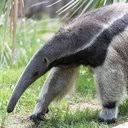 An Anteater is nearly 6 feet long, yet its mouth is only an inch wide. All anteaters have elongated snouts equipped with a thin tongue that can be extended to a length greater than the length of the head; their tube-shaped mouths have lips but no teeth. They use their large, curved foreclaws to tear open ant and termite mounds and for defense, while their dense and long fur protects them from attacks from the insects.
An Anteater is nearly 6 feet long, yet its mouth is only an inch wide. All anteaters have elongated snouts equipped with a thin tongue that can be extended to a length greater than the length of the head; their tube-shaped mouths have lips but no teeth. They use their large, curved foreclaws to tear open ant and termite mounds and for defense, while their dense and long fur protects them from attacks from the insects.Alligators
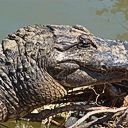 Mississippi Alligators have the most powerful bite force ever measured. According to a recent study published in the Journal of Zoology of London, these Alligators snap their strong jaws shut with an average force of 2,125 pounds, or with about as much force as a mid-size car falling on top of someone. One even bit as much as 2,960 pounds of force.
Mississippi Alligators have the most powerful bite force ever measured. According to a recent study published in the Journal of Zoology of London, these Alligators snap their strong jaws shut with an average force of 2,125 pounds, or with about as much force as a mid-size car falling on top of someone. One even bit as much as 2,960 pounds of force.Bears
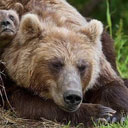 Bears are mammals that belong to the family Ursidae. They can be as small as four feet long and about 60 pounds (the sun bear) to as big as eight feet long and more than a thousand pounds (the polar bear). They’re found throughout North America, South America, Europe, and Asia.
They have 42 teeth. That's ten more than the average human adult as any dentist South Jersey can tell you. Most dentists would probably be squeamish at the thought of checking a bears teeth.
Bears are mammals that belong to the family Ursidae. They can be as small as four feet long and about 60 pounds (the sun bear) to as big as eight feet long and more than a thousand pounds (the polar bear). They’re found throughout North America, South America, Europe, and Asia.
They have 42 teeth. That's ten more than the average human adult as any dentist South Jersey can tell you. Most dentists would probably be squeamish at the thought of checking a bears teeth.
Butterfly
 They can be found living on land, in the air, and underwater – thriving almost everywhere except for the open ocean. They commonly have 12,000 eyes and can see forwards, backwards, above and below themselves all at the same time. There are an estimated 18,000 described butterfly species found globally.
They can be found living on land, in the air, and underwater – thriving almost everywhere except for the open ocean. They commonly have 12,000 eyes and can see forwards, backwards, above and below themselves all at the same time. There are an estimated 18,000 described butterfly species found globally. Cats & Dogs
 According to the tests made at the Institute for the Study of Animal Problems in Washington D.C., cats & dogs, like people, are either right handed or left handed, that is, these animals favour either their right or left paws. The Chow is the only dog that has a black tongue. The tongues of all other dogs are pink. A common Labrador bites with 125 pounds of force. Nose prints are used to identify dogs in the same way finger prints are used to identify human beings. Breeders and trainers keep a dog's nose prints on file as part of its permanent record and insurance companies now require them whenever a dog is to be bonded. At one time paw prints were used as a means of canine identification, but these proved less accurate than noses.
According to the tests made at the Institute for the Study of Animal Problems in Washington D.C., cats & dogs, like people, are either right handed or left handed, that is, these animals favour either their right or left paws. The Chow is the only dog that has a black tongue. The tongues of all other dogs are pink. A common Labrador bites with 125 pounds of force. Nose prints are used to identify dogs in the same way finger prints are used to identify human beings. Breeders and trainers keep a dog's nose prints on file as part of its permanent record and insurance companies now require them whenever a dog is to be bonded. At one time paw prints were used as a means of canine identification, but these proved less accurate than noses.
A cat has 32 muscles in each ear. There was a cat in Japan that said neow. A cat is more inclined to watch TV than a dog, says the experts. (A cat relies more on vision, rather than on smell.) The first year of a cat’s life is roughly equal to the first 15 years of human life. Cats can rotate their ears 180 degrees. A cat cannot see directly under its nose. Some believe that if you dream about a white cat, good luck will follow.
Cockroach
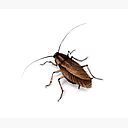 Roaches can be brought into the home in the form of egg cases that have been laid in groceries, rugs, used appliances, etc. They are not always a sign of poor housekeeping. They can live several weeks with their head cut off. They tend to live in darkened or damp areas such as around sinks, behind stoves and refrigerators, in drains and cracks. They are often only seen at night. Every 20 to 28 days, a female drops one to four egg cases. Consequently any place infested with cockroaches will also be infested with their eggs.
Roaches can be brought into the home in the form of egg cases that have been laid in groceries, rugs, used appliances, etc. They are not always a sign of poor housekeeping. They can live several weeks with their head cut off. They tend to live in darkened or damp areas such as around sinks, behind stoves and refrigerators, in drains and cracks. They are often only seen at night. Every 20 to 28 days, a female drops one to four egg cases. Consequently any place infested with cockroaches will also be infested with their eggs.Cows
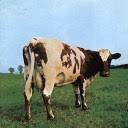 Around 10,500 years ago, cattle were domesticated from as few as 80 progenitors in central Anatolia, the Levant and Western Iran.
A heard of sixty cows is capable of producing a ton of milk in less than a day. On average, one dairy cow produces 38,000 glasses of milk per year. Breeding stock may be allowed a longer lifespan, occasionally living as long as 25 years. The oldest recorded cow, Big Bertha, died at the age of 48 in 1993. The weight of adult cattle varies, depending on the breed. The world record for the heaviest bull was in 1955 weiging in at 1,740 kg (3,840 lb), a Chianina named Donetto. The heaviest steer was eight-year-old 'Old Ben', a Shorthorn/Hereford cross weighing in at 2,140 kg (4,720 lb) in 1910.
Around 10,500 years ago, cattle were domesticated from as few as 80 progenitors in central Anatolia, the Levant and Western Iran.
A heard of sixty cows is capable of producing a ton of milk in less than a day. On average, one dairy cow produces 38,000 glasses of milk per year. Breeding stock may be allowed a longer lifespan, occasionally living as long as 25 years. The oldest recorded cow, Big Bertha, died at the age of 48 in 1993. The weight of adult cattle varies, depending on the breed. The world record for the heaviest bull was in 1955 weiging in at 1,740 kg (3,840 lb), a Chianina named Donetto. The heaviest steer was eight-year-old 'Old Ben', a Shorthorn/Hereford cross weighing in at 2,140 kg (4,720 lb) in 1910.Crocodile
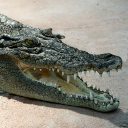 A Crocodile weighing only 120 pounds exerts a force of about 1,540 pounds between its jaws and the larger ones can apply 5,000 pounds of pressure per square inch. A human's jaw exerts a force of about 140 to 180 pounds. A crocodile can't move its tongue and cannot chew. In the wild, crocodiles will clamp down on their prey with their massive jaws, crush it, and then they will swallow the prey whole. When a crocodile loses a tooth, it is quickly replaced. Crocodiles don't sweat. Its digestive juices are so strong that it can digest a steel nail. Crocodiles also have very keen hearing - it is so good, that they can hear their babies calling from inside their egg. They can swim up to 20 mph (32 kph) and can hold their breath underwater for around one hour. On land, crocodiles aren't nearly as fast and can only run up to 11 mph (17.6 kph) for a short distance.
A Crocodile weighing only 120 pounds exerts a force of about 1,540 pounds between its jaws and the larger ones can apply 5,000 pounds of pressure per square inch. A human's jaw exerts a force of about 140 to 180 pounds. A crocodile can't move its tongue and cannot chew. In the wild, crocodiles will clamp down on their prey with their massive jaws, crush it, and then they will swallow the prey whole. When a crocodile loses a tooth, it is quickly replaced. Crocodiles don't sweat. Its digestive juices are so strong that it can digest a steel nail. Crocodiles also have very keen hearing - it is so good, that they can hear their babies calling from inside their egg. They can swim up to 20 mph (32 kph) and can hold their breath underwater for around one hour. On land, crocodiles aren't nearly as fast and can only run up to 11 mph (17.6 kph) for a short distance.Dinosaur
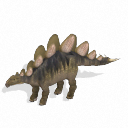 Dinosaurs were reptiles that lived on Earth from about 230 million years ago to about 65 million years ago. They dominated the world over anything else at that time and there was around 1,850 different species we know of - most were vegetarians. They had eggs that were as large as basketballs and about 40 different kinds of dinosaur eggs have been discovered. The Stegosaurus, a giant dinosaur that grew to more than 18 feet long and was armed with enormous bony plates on its neck, back and tail, had a brain that weighed only 2 ounces, which is about the size of a walnut. It was once thought that Stegosaurus walked on two legs as well as some of the other types but most meat eaters walked on two feet and could run quite fast. It is believed that dinosaurs lived to be more than a hundred years old. A T-rex bite was more than twice as powerful as a lion's bite. Some of the biggest plant eaters had to eat as much as a ton of food a day. This is similar to eating a bus-sized pile of vegetation every day. No one knows exactly how long a dinosaur’s lifespan was. Some scientists speculate that dinosaurs may have lived for as long as 200 years. Many scientists believe that a 6-mile wide meteorite hit the Yucatan Peninsula of Mexico 65.5 million years ago and caused the extinction of the dinosaurs. More than 99.9 percent of all animal species that have ever lived on earth were extinct before the coming of man.
Dinosaurs were reptiles that lived on Earth from about 230 million years ago to about 65 million years ago. They dominated the world over anything else at that time and there was around 1,850 different species we know of - most were vegetarians. They had eggs that were as large as basketballs and about 40 different kinds of dinosaur eggs have been discovered. The Stegosaurus, a giant dinosaur that grew to more than 18 feet long and was armed with enormous bony plates on its neck, back and tail, had a brain that weighed only 2 ounces, which is about the size of a walnut. It was once thought that Stegosaurus walked on two legs as well as some of the other types but most meat eaters walked on two feet and could run quite fast. It is believed that dinosaurs lived to be more than a hundred years old. A T-rex bite was more than twice as powerful as a lion's bite. Some of the biggest plant eaters had to eat as much as a ton of food a day. This is similar to eating a bus-sized pile of vegetation every day. No one knows exactly how long a dinosaur’s lifespan was. Some scientists speculate that dinosaurs may have lived for as long as 200 years. Many scientists believe that a 6-mile wide meteorite hit the Yucatan Peninsula of Mexico 65.5 million years ago and caused the extinction of the dinosaurs. More than 99.9 percent of all animal species that have ever lived on earth were extinct before the coming of man.Dolphins
Giraffe
The giraffe can open and close its nostrils at will, can run faster than a horse and makes almost no sound whatsoever. The first giraffe ever seen in the West was brought to Rome about 46 B.C. by no less a personage than Julius Caesar.Giraffe
The giraffe's tongue is 18 inches long. It uses it's tongue to rip leaves off branches for consumption. It also uses it's tongue to clean it's nose when unwanted visitors like tree ants decide to visit.
In comparison, if a human had such a tongue, one would be able to clean the top of one's head, one's nostrils and one's ears. Giraffe
Though the giraffe's neck is about 7 feet long, it contains the same number of vertebrae as a mouse's, which is seven.Giraffe
A giraffe can go without water longer than a camel.Ivory
From 1890 to 1900, 20 tons of ivory were shipped every year from Siberia to London. All of this ivory was taken from the remains of woolly mammoths, which have been extinct since the Ice Age.Kangaroo
At birth, baby kangaroos are only about an inch long, no bigger than a large waterbug or a queen bee.Lion
A lion in the wild usually makes no more than twenty kills a year.Moose
The male moose sheds its antlers every winter and grows a new set the following summer.Moose
A full grown moose may be 8 feet high at the shoulder and weigh almost a ton.Mosquito
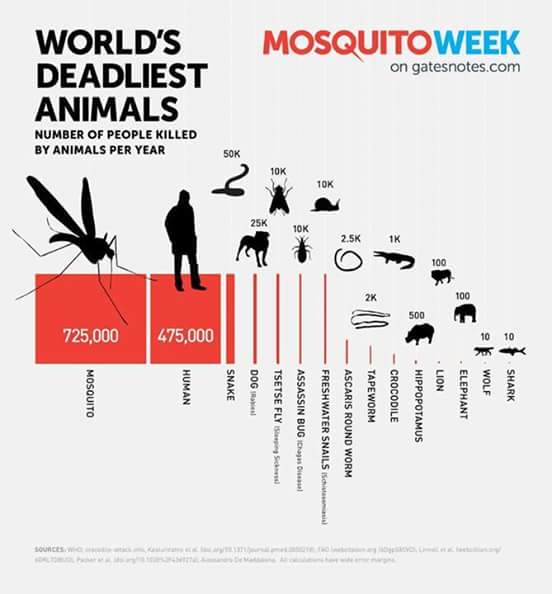
Polar Bear
 A newborn polar bear cub weighs a lot less than a newborn human, only about 1-1.5 pounds. Yet when fully grown, polar bears reach weights of up to 1,600 pounds.
A newborn polar bear cub weighs a lot less than a newborn human, only about 1-1.5 pounds. Yet when fully grown, polar bears reach weights of up to 1,600 pounds.
The Polar Bear is one of the only large land mammals that has absolutely no fear of man. It will stalk people at every chance and has been known to charge large groups of hunters, sometimes into heavy gunfire, not slowing down even after its vital organs have been hit repeatedly.
Pigs
Almost half of all the pigs in the world are kept by farmers in China.Rats
Two rats can parent 15,000 rats in less than a year.Rats
Kangaroo rats never drink water. Like their relatives the pocket mice, they carry their own water source within them, producing fluids from the food they eat and the air the breathe.Rats
A rat can fall from a five story building without injury.Sheep
Lanolin, an essential ingredient of many expensive cosmetics, in its natural form, a foul smelling, waxy, tarlike substance, is extracted from the fleece of sheep.Skunk
A skunk will not bite and throw its scent at the same time.Skunk
The smell of a skunk can be detected by a human a mile away.Snakes
Most varieties of snakes can go an entire year without eating a single morsel of food.Snakes
A Python can swallow a rabbit whole and may eat as many as 150 mice in a six month period.Whale
The Blue Whale weighs as much as thirty elephants and is as long as three Greyhound buses.Water Animals
Alligators, dolphins, crocodiles, frogs, porpoises, turtles, water snakes, whales and several other watergoing creatures will drown if kept underwater too long. Unlike fish, these animals require a certain amount of air in order to survive.
